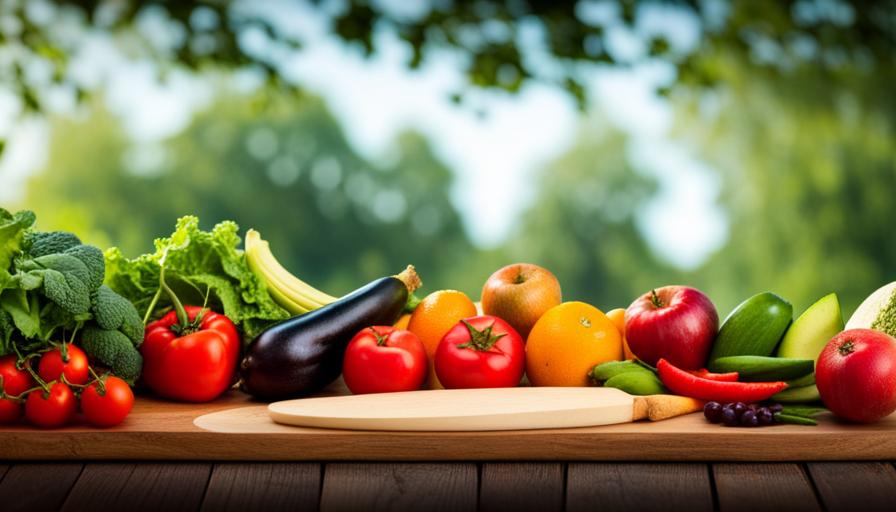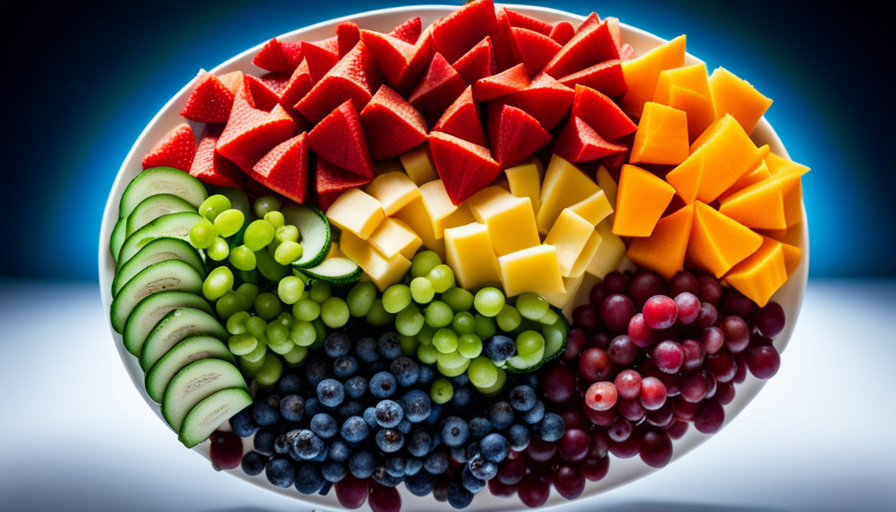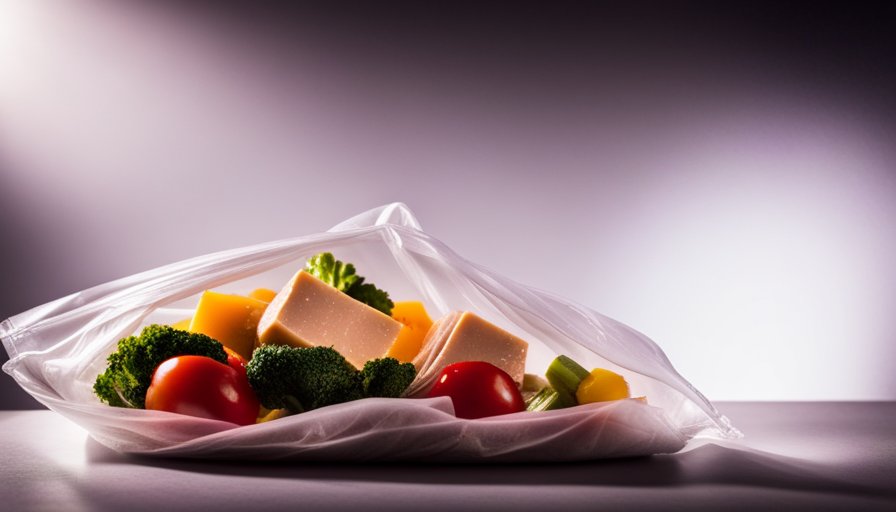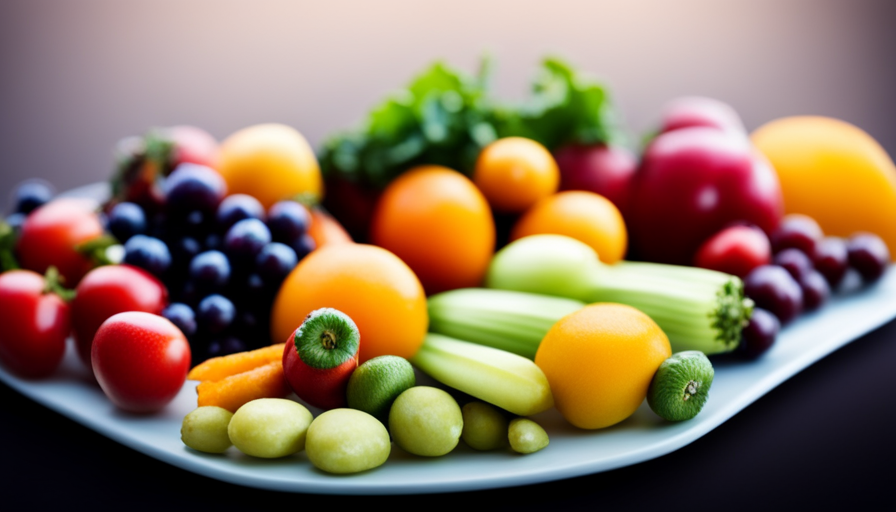Have you ever thought about how to attain peak health and energy through your diet? Surprisingly, the solution might be found in adopting a raw food diet. By enjoying raw, unprocessed foods, you can access a range of advantages for your body and mind. This article will lead you on the journey of following a raw food diet, offering you the key principles, nutrients, and techniques needed for success.
Transitioning to a raw food lifestyle may seem daunting at first, but fear not! With the right information and motivation, you can easily overcome any challenges that arise. Whether you’re dining out or socializing, we’ll equip you with tips to stay on track with your raw food journey.
Additionally, we’ll provide you with delicious recipe ideas for every meal of the day, ensuring that your taste buds are satisfied. Remember, the key to a successful raw food diet is listening to your body and customizing it to meet your individual needs.
So, let’s dive in and discover the incredible world of raw food eating together!
Key Takeaways
- Transition to a raw food lifestyle gradually and experiment with different recipes and food combinations for flavor and satisfaction.
- Incorporate a variety of fruits, vegetables, sprouts, and fermented foods to ensure a wide range of nutrients.
- Obtain protein from plant-based sources like leafy greens, sprouts, nuts, and seeds.
- Use raw food preparation techniques like dehydrating, blending, and juicing to preserve nutrients and flavors.
Understanding the Principles of a Raw Food Diet
Now that you’ve made the decision to embark on a raw food diet, let’s dive into the principles that’ll guide you on this transformative journey.
Raw food diets are based on the principle that uncooked and unprocessed foods provide the most nutrients and enzymes for optimal health. By consuming a variety of fruits, vegetables, nuts, and seeds in their raw state, you can reap numerous benefits.
One of the main principles of a raw food diet is that heating food above 118 degrees Fahrenheit destroys enzymes and alters the nutritional content. Enzymes play a crucial role in digestion and nutrient absorption, so consuming raw foods ensures that you get the most out of your meals.
Additionally, raw foods are rich in vitamins, minerals, and antioxidants, which can boost your immune system, improve digestion, and promote overall well-being.
Another principle of a raw food diet is the emphasis on whole, unprocessed foods. By avoiding processed foods, you eliminate harmful additives, preservatives, and artificial ingredients from your diet. This can lead to weight loss, increased energy levels, improved skin health, and reduced risk of chronic diseases.
Incorporating these principles into your raw food diet can have numerous benefits for your health and well-being. By nourishing your body with nutrient-dense, unprocessed foods, you can experience increased energy, improved digestion, and a strengthened immune system.
So, get ready to embark on this exciting journey towards a healthier, more vibrant you.
Benefits of a Raw Food Diet for Health and Vitality
Indulging in the vibrant and unadulterated essence of nature’s bountiful harvest will infuse your being with an invigorating vitality, allowing you to blossom like a radiant flower in the garden of health and wellness. The benefits of a raw food diet extend beyond just the physical realm. Not only does it promote weight loss and healthy digestion, but it also nourishes your body with an abundance of essential nutrients and enzymes.
When it comes to weight loss, a raw food diet can be highly effective. Raw foods are typically low in calories and high in fiber, which helps to keep you feeling fuller for longer. Additionally, the natural enzymes present in raw fruits and vegetables aid in breaking down fats and boosting your metabolism. This combination can lead to a gradual and sustainable weight loss over time.
Furthermore, the raw food diet is known for its positive impact on digestion. Raw foods are rich in fiber, which promotes regular bowel movements and prevents constipation. The live enzymes found in raw fruits and vegetables also aid in the digestion process, making it easier for your body to absorb nutrients. Additionally, the high water content in raw foods helps to keep you hydrated and supports healthy digestion.
Emotional Response Table:
| BENEFITS OF RAW FOOD DIET | |
|---|---|
| Weight Loss | 🌿 |
| Digestive Health | 🌸 |
| Nutrient-Rich | 🌱 |
| Enzyme Support | 🌼 |
Incorporating a raw food diet into your lifestyle can lead to numerous health benefits, including weight loss and improved digestion. By nourishing your body with the natural goodness of fruits and vegetables, you can achieve a vibrant and energized state of well-being. Remember to consult with a healthcare professional before making any significant dietary changes.
Getting Started: Transitioning to a Raw Food Lifestyle
Embark on a journey towards vibrant vitality and wellness by seamlessly transitioning to a lifestyle filled with the pure essence of nature’s bountiful harvest. Transitioning to a raw food lifestyle can be an exciting and transformative experience. To help you get started, here are some transitioning tips and common challenges to be aware of.
Firstly, it’s important to start slowly and gradually increase the amount of raw food in your diet. Begin by incorporating more fruits, vegetables, and raw nuts into your meals. This will allow your body to adjust to the change and prevent any digestive discomfort.
Another helpful tip is to experiment with different recipes and food combinations. Raw food can be incredibly flavorful and satisfying, so take the time to discover new flavors and textures. Incorporating a variety of fruits, vegetables, sprouts, and fermented foods will ensure that you’re getting a wide range of nutrients.
One common challenge when transitioning to a raw food lifestyle is social situations. It can be difficult to navigate gatherings or dining out when your friends or family may not be following the same diet. In these situations, it’s important to communicate your dietary needs and be prepared by bringing your own raw food options.
Transitioning to a raw food lifestyle is a journey that requires patience and experimentation. By following these transitioning tips and being aware of common challenges, you can successfully embark on this path towards optimal health and vitality.
Essential Nutrients and Foods to Include in a Raw Food Diet
Transitioning to a raw food lifestyle may seem daunting, but incorporating a variety of nutrient-rich fruits, vegetables, sprouts, and fermented options can surprisingly satisfy your taste buds and nourish your body.
When following a raw food diet, it’s important to ensure you’re obtaining essential nutrients to support your overall health.
One essential nutrient to focus on is protein. While many people associate protein with animal products, there are plenty of plant-based sources available in a raw food diet. Foods like leafy greens, sprouts, nuts, and seeds are all excellent sources of protein. Incorporating a variety of these foods into your meals can help you meet your protein needs.
Another important nutrient to consider is calcium. Many raw food advocates emphasize the importance of including calcium-rich foods in their diet. Leafy greens, such as kale and spinach, are great sources of calcium and can easily be incorporated into salads or smoothies.
Omega-3 fatty acids are also essential for overall health. Flaxseeds, chia seeds, and walnuts are all excellent sources of omega-3s and can be easily added to your meals or snacks.
In addition to these nutrients, it’s important to include a variety of fruits and vegetables to ensure you’re getting a wide range of vitamins, minerals, and antioxidants.
By incorporating these essential nutrients and foods into your raw food diet, you can support your overall health and well-being.
Raw Food Preparation Techniques and Equipment
To truly experience the vibrant flavors and nourishing benefits of a raw food lifestyle, you’ll need to embrace the exciting world of raw food preparation techniques and invest in the necessary equipment. Raw food preparation requires special methods to preserve the nutrients and flavors of the ingredients. Here are some techniques and equipment that will help you make the most of your raw food diet:
-
Dehydrating: Dehydrators are essential for removing moisture from fruits, vegetables, and nuts while keeping their enzymes intact. This technique allows you to create delicious raw snacks like kale chips or fruit leathers.
-
Blending: A high-speed blender is a must-have tool for making smoothies, soups, and sauces. It helps break down the fiber in fruits and vegetables, making their nutrients more accessible to your body.
-
Fermenting: Fermentation is a natural preservation method that enhances the flavor and nutritional value of foods. You can ferment vegetables, such as sauerkraut or kimchi, to boost their probiotic content.
-
Juicing: Juicers extract the liquid from fruits and vegetables, providing a concentrated dose of vitamins, minerals, and antioxidants. Freshly pressed juices can be enjoyed on their own or used as a base for smoothies.
In addition to preservation techniques, raw food can also be used in skincare. The benefits of using raw food in skincare include increased hydration, improved skin texture, and a boost in antioxidants. Raw honey, coconut oil, and avocado are just a few examples of raw ingredients that can be used in homemade skincare products. By incorporating raw food into your skincare routine, you can nourish your skin from the outside in.
Incorporating Variety and Creativity in Your Raw Food Meals
Get ready to spice up your raw meals with a burst of creativity and an array of flavors to tantalize your taste buds. When it comes to incorporating variety and creativity into your raw food meals, the options are endless.
By exploring different ingredients and trying out new recipes, you can create a diverse and exciting menu that will keep you excited about eating raw.
One way to introduce variety into your raw food meals is by experimenting with different fruits and vegetables. Don’t be afraid to step out of your comfort zone and try exotic fruits like dragon fruit or jackfruit. You can also play with different textures by using spiralized zucchini noodles or cauliflower rice as a base for your dishes.
Another way to add creativity to your raw food meals is by exploring different flavor combinations. Mix and match different herbs and spices to create unique and delicious dressings or marinades. For example, try combining fresh basil, garlic, and sun-dried tomatoes for a flavorful pesto sauce.
Lastly, don’t forget to explore creative recipes that are specifically designed for raw food diets. There are countless resources available online and in cookbooks that provide innovative and tasty recipes for raw meals. From raw lasagna to raw chocolate truffles, these recipes will not only satisfy your cravings but also impress your taste buds.
Incorporating variety and creativity into your raw food meals is a fun and exciting way to keep your diet interesting and enjoyable. So go ahead, explore new ingredients, try out different flavor combinations, and get creative in the kitchen!
Overcoming Challenges and Staying Motivated on a Raw Food Diet
Maintaining enthusiasm and motivation on a raw food journey can be achieved by overcoming challenges and staying committed to exploring new flavors and recipes. Staying motivated to stick to a raw food diet can sometimes be difficult, but with the right mindset and strategies, it can become a sustainable lifestyle choice.
Here are some tips to help you overcome challenges and stay motivated on your raw food journey:
-
Set realistic goals: Start small and gradually increase the raw food portion in your meals. This will make the transition easier and less overwhelming.
-
Find support: Joining a raw food community or finding a buddy who shares your goals can provide encouragement and accountability.
-
Experiment with recipes: Keep your meals interesting and exciting by trying out new raw food recipes. This will prevent boredom and make the journey more enjoyable.
-
Focus on the benefits: Remind yourself of the numerous health benefits of a raw food diet, such as increased energy, improved digestion, and glowing skin. This will help you stay motivated and committed to your goals.
By incorporating these strategies into your raw food journey, you can overcome challenges and stay motivated to continue on the path towards a healthier lifestyle. Remember to be patient with yourself and celebrate small victories along the way.
Tips for Dining Out and Socializing on a Raw Food Diet
Embrace the thrill of exploring new flavors and socializing with friends while on your raw food journey. Dining out and socializing on a raw food diet can be a bit challenging at first, but with a few tips and tricks, you can navigate these situations with ease.
When it comes to dining out, it’s important to find restaurants that offer raw food options or are willing to accommodate your needs. Call ahead and ask about their menu options, so you can plan ahead and make the best choices for your raw food diet. It’s also a good idea to familiarize yourself with dining etiquette, such as using utensils properly and being mindful of others’ dining experiences.
Dealing with cravings while dining out or socializing can be tough, but there are ways to overcome them. One strategy is to focus on the delicious raw food options available to you. Many restaurants offer creative and tasty raw food dishes that can satisfy your cravings and leave you feeling satisfied. Additionally, having a support system in place can be helpful. Surround yourself with like-minded individuals who understand your dietary choices and can provide encouragement when cravings strike.
Remember, dining out and socializing on a raw food diet is all about balance and enjoying the experience. By being prepared, knowing your options, and staying motivated, you can confidently navigate any dining situation and continue on your raw food journey with success.
Raw Food Recipe Ideas for Breakfast, Lunch, and Dinner
Start your day off right with a mouthwatering raw food recipe that will leave you energized and ready to conquer the day. Imagine waking up to a refreshing and vibrant fruit smoothie bowl, bursting with colorful toppings and flavors. Not only will this breakfast option satisfy your taste buds, but it will also provide you with essential nutrients to fuel your morning.
To give you some inspiration, here are a few raw food breakfast recipes that you can easily prepare at home:
-
Fruit Smoothie Bowl: Blend together a variety of your favorite fruits, such as bananas, berries, and mangoes. Pour the smoothie into a bowl and top it with sliced fruits, nuts, and seeds.
-
Chia Pudding: Mix chia seeds with plant-based milk and let it sit overnight. In the morning, add your choice of fruits, nuts, and a drizzle of honey for sweetness.
-
Raw Granola: Combine nuts, seeds, and dried fruits in a food processor until crumbly. Serve with plant-based yogurt and fresh fruits for a crunchy and nutritious breakfast.
When it comes to raw food dinner ideas, there are endless possibilities. You can try raw zucchini noodles with a flavorful marinara sauce, or a refreshing cucumber and avocado salad. Get creative with raw vegetable wraps filled with your favorite veggies and a delicious sauce. Remember, the key is to experiment with different flavors and textures to keep your meals exciting and satisfying.
Listening to Your Body: Adjusting and Customizing Your Raw Food Diet
Listen to your body and tailor your approach to a raw food lifestyle to meet your unique needs and preferences. Adjusting strategies can be helpful to ensure that you’re getting all the nutrients your body requires.
One strategy is to gradually transition to a raw food diet, allowing your body time to adapt. Start by incorporating more raw fruits and vegetables into your meals and gradually increase the amount over time.
Another strategy is to experiment with different types of raw foods to find what works best for you. Some people thrive on a diet that includes a variety of fruits, vegetables, nuts, and seeds, while others may find that they need to include some cooked foods to feel their best. It’s important to listen to your body and make adjustments accordingly.
While a raw food diet can have many health benefits, there are also potential drawbacks to consider. One drawback is the risk of nutrient deficiencies. Raw food diets often restrict certain food groups, such as grains and legumes, which can make it difficult to get all the necessary nutrients. It’s important to ensure that you’re getting enough protein, calcium, iron, and vitamin B12 from other sources.
Another potential drawback is the time and effort required to prepare raw food meals. Raw food diets often involve more preparation and planning, as well as the need to invest in kitchen equipment such as a blender or dehydrator. It’s important to weigh these potential drawbacks against the benefits and decide if a raw food diet is right for you.
Frequently Asked Questions
Can I still eat cooked food occasionally while following a raw food diet?
Yes, occasionally eating cooked food while following a raw food diet is possible. However, it’s important to note that the benefits of a raw food diet are maximized when consuming raw, plant-based foods. To incorporate cooked food alternatives, you can try steaming vegetables or lightly cooking them at low temperatures. Transitioning to a raw food diet gradually can help your body adjust to the change. Remember, it’s all about finding a balance that works for you and your health goals.
How can I ensure I am getting enough protein on a raw food diet?
To ensure you’re getting enough protein on a raw food diet, focus on incorporating raw food protein sources into your meals. This can include foods like nuts, seeds, legumes, and leafy greens. Balancing nutrients on a raw food diet is important, so make sure you’re also getting enough vitamins, minerals, and healthy fats. It may be helpful to consult with a registered dietitian to ensure you’re meeting your protein needs while following a raw food diet.
Are there any potential health risks or side effects associated with a raw food diet?
While exploring the potential risks and side effects of a raw food diet, it’s essential to remain informed. Like any dietary change, there are considerations to keep in mind.
Some people may experience digestive issues, nutrient deficiencies, or compromised immune function due to bacteria present in raw foods. However, the risks can be minimized by practicing proper food handling and ensuring a balanced intake of nutrients.
Remember, knowledge is power when it comes to your health.
Can I lose weight on a raw food diet?
Yes, you can lose weight on a raw food diet. A raw food diet can be effective for weight loss because it is low in calories and high in nutrients. To successfully stick to a raw food diet, focus on consuming a variety of fruits, vegetables, nuts, and seeds. It’s also important to drink plenty of water and listen to your body’s hunger and fullness cues. Remember to consult a healthcare professional before starting any new diet.
How do I handle cravings for unhealthy foods while on a raw food diet?
Cravings for unhealthy foods can be tough to handle while on a raw food diet, but don’t worry, there are ways to overcome them.
One effective strategy is to identify the underlying cause of your cravings, such as emotional triggers or nutrient deficiencies, and address them directly.
Additionally, try incorporating healthy alternatives into your diet, like fresh fruits and vegetables, nuts, and seeds, to satisfy your cravings while staying on track with your raw food diet.
Can a Raw Food Diet Provide Enough Fat for a Vegetarian?
Yes, increasing fat intake on raw vegetarian diets is achievable. Foods like avocados, nuts, seeds, and coconuts can provide essential fats. Incorporating these nutrient-rich options can help ensure a balanced raw food diet that meets the needed fat requirements for vegetarians.
Conclusion
In conclusion, embarking on a raw food diet can be a transformative journey towards optimal health and vitality. By understanding the principles and benefits of this lifestyle, you can make the transition and incorporate essential nutrients into your daily meals.
Overcoming challenges and staying motivated may require perseverance, but the rewards are worth it. Remember to listen to your body, adjusting and customizing your diet as needed.
Just like a caterpillar transforming into a butterfly, embracing a raw food diet can lead to a beautiful and vibrant new you.










